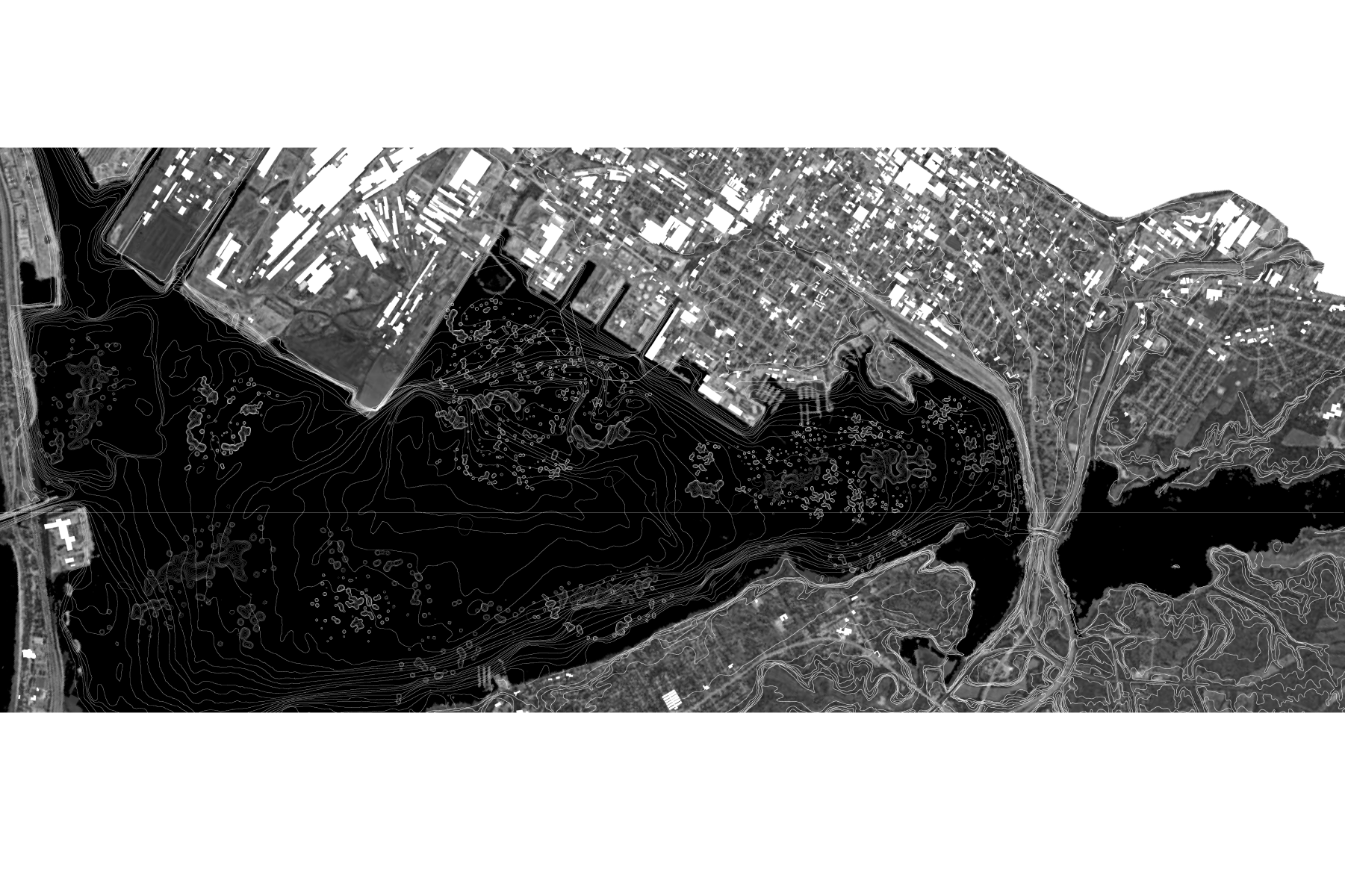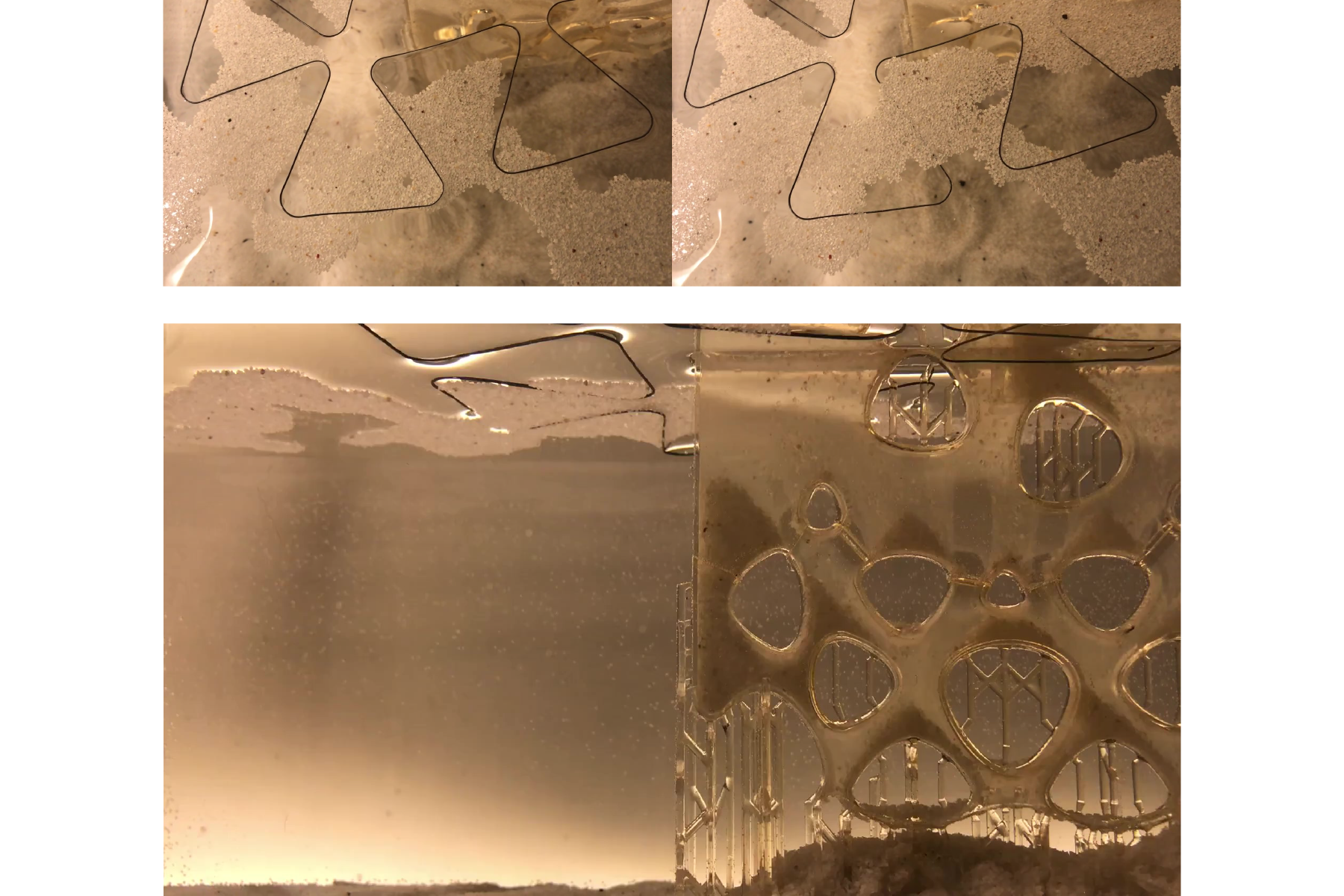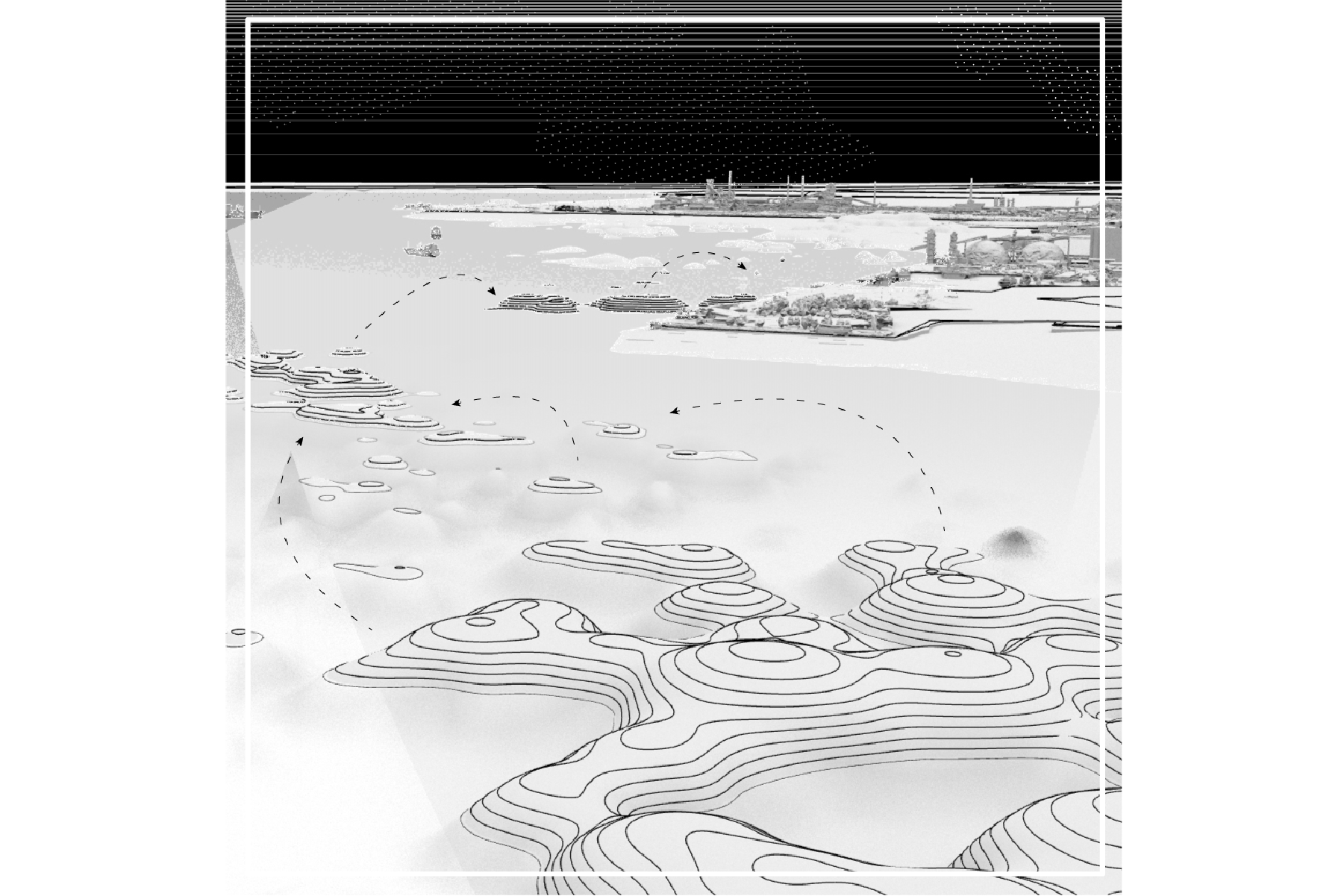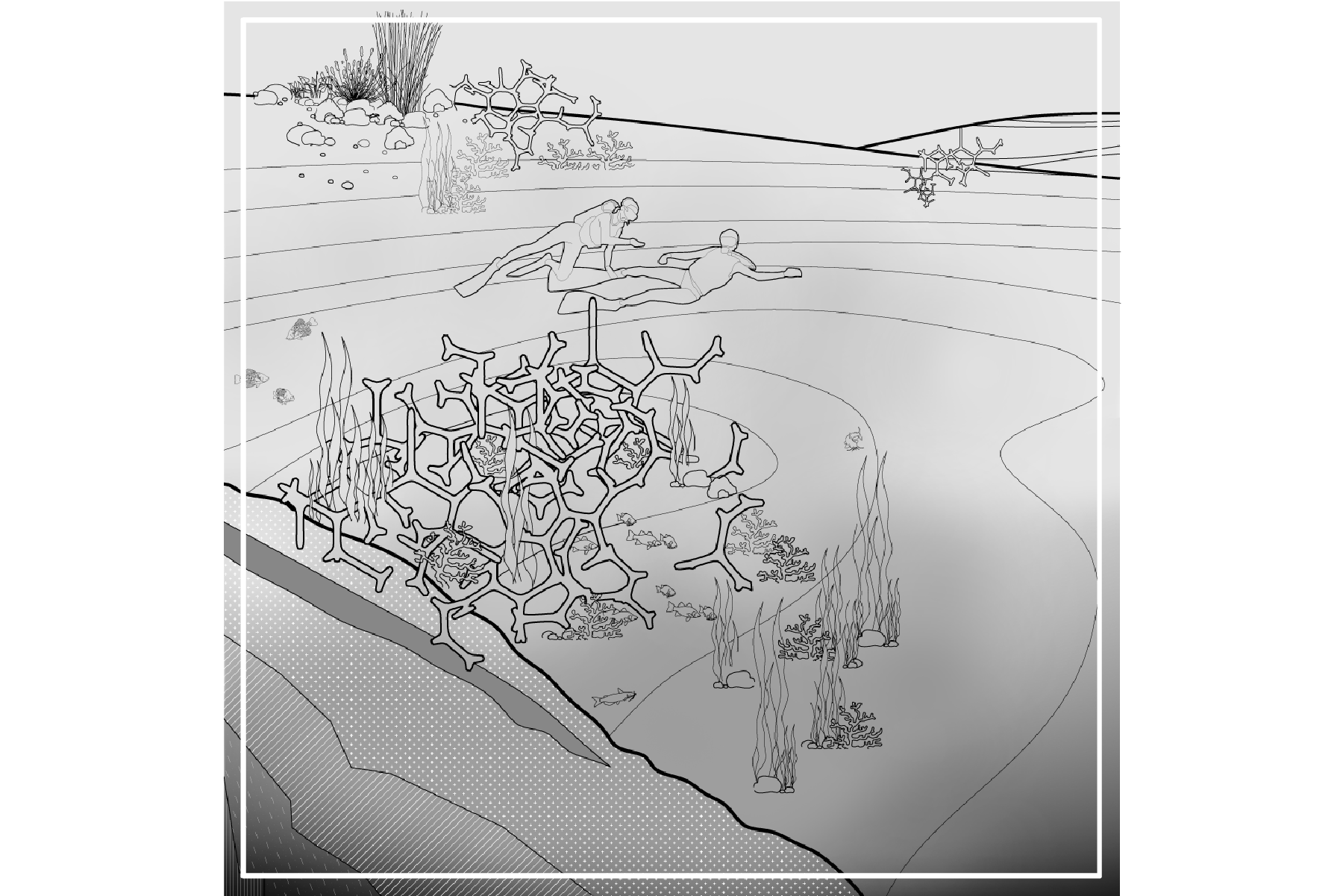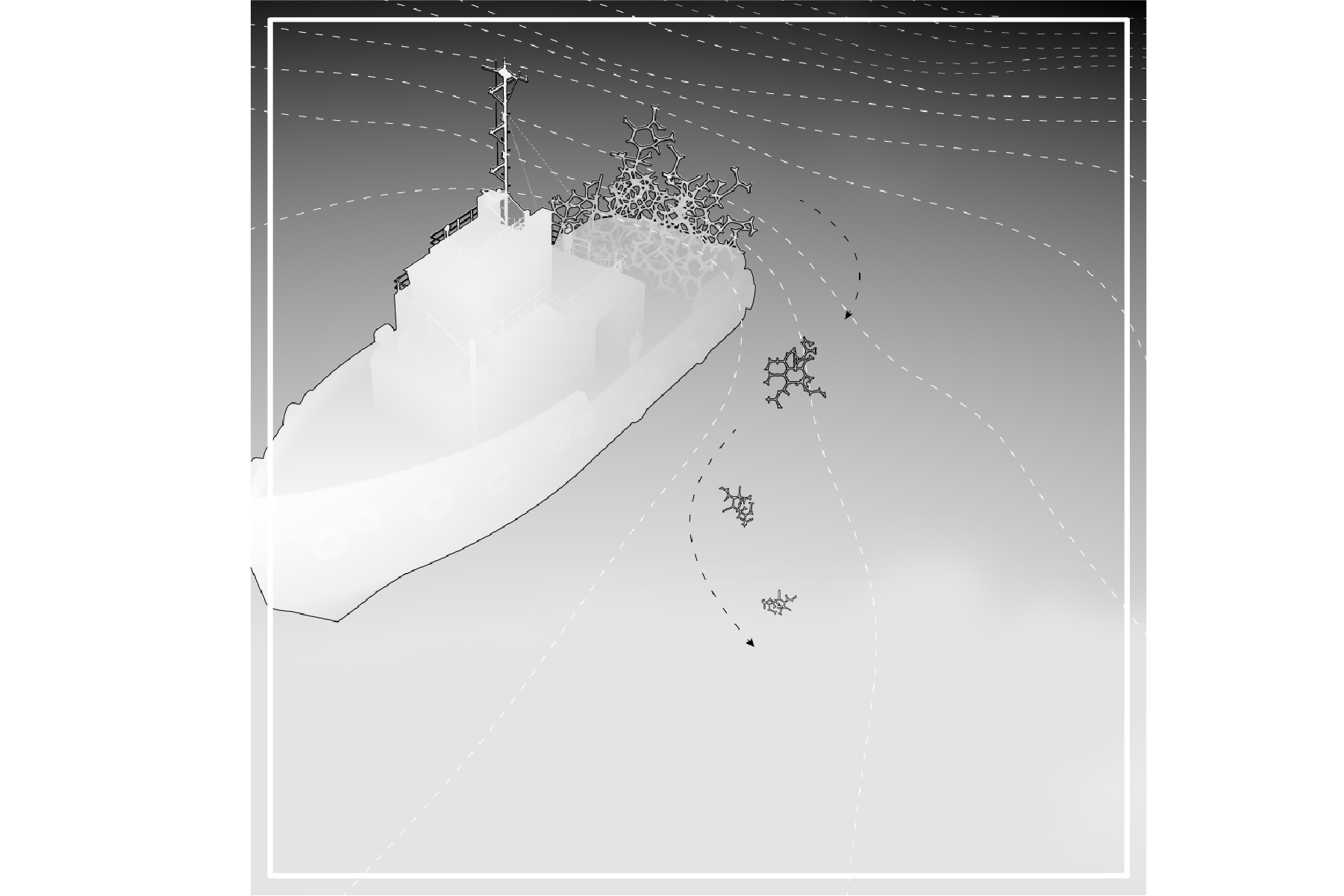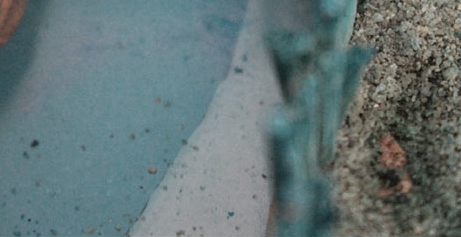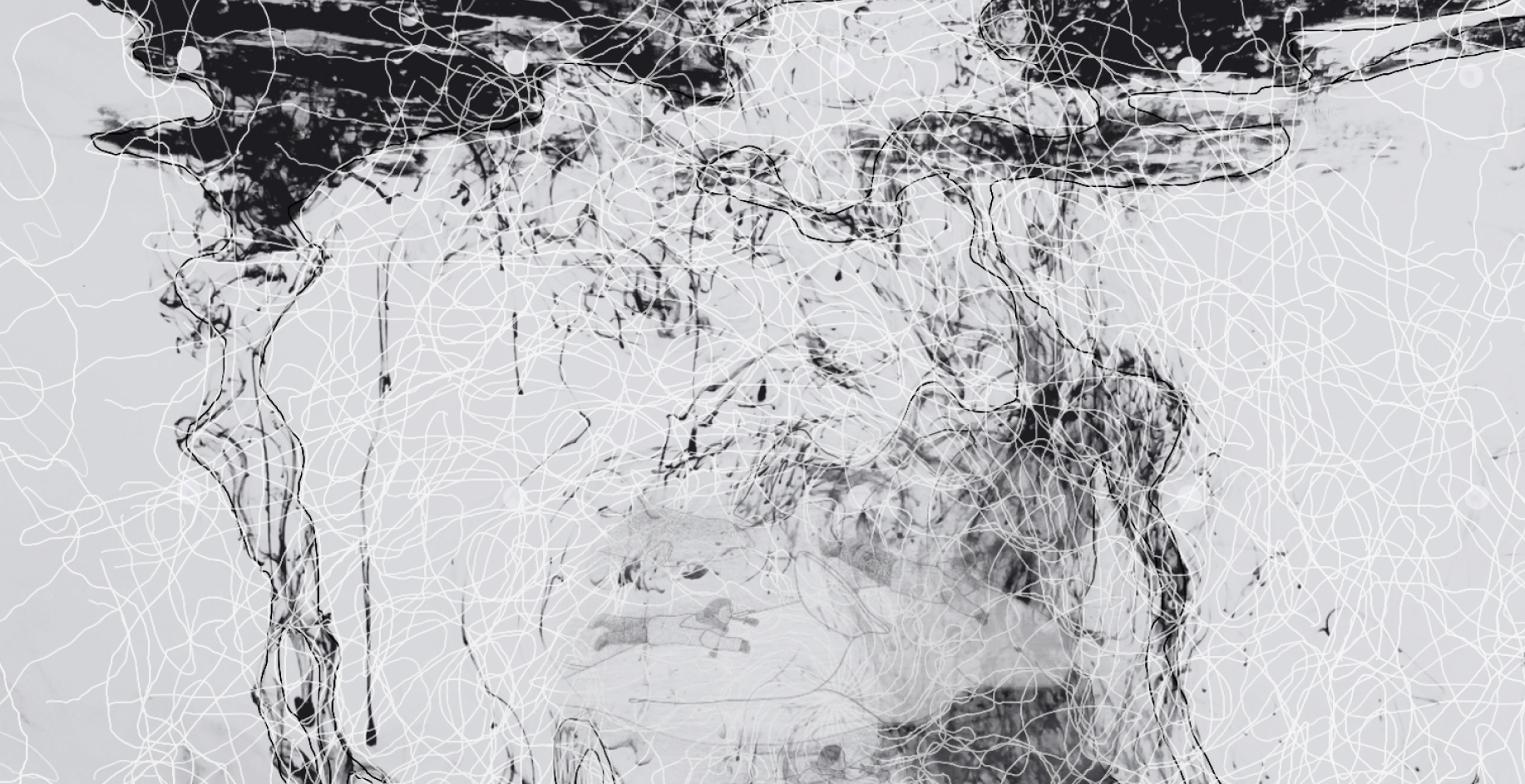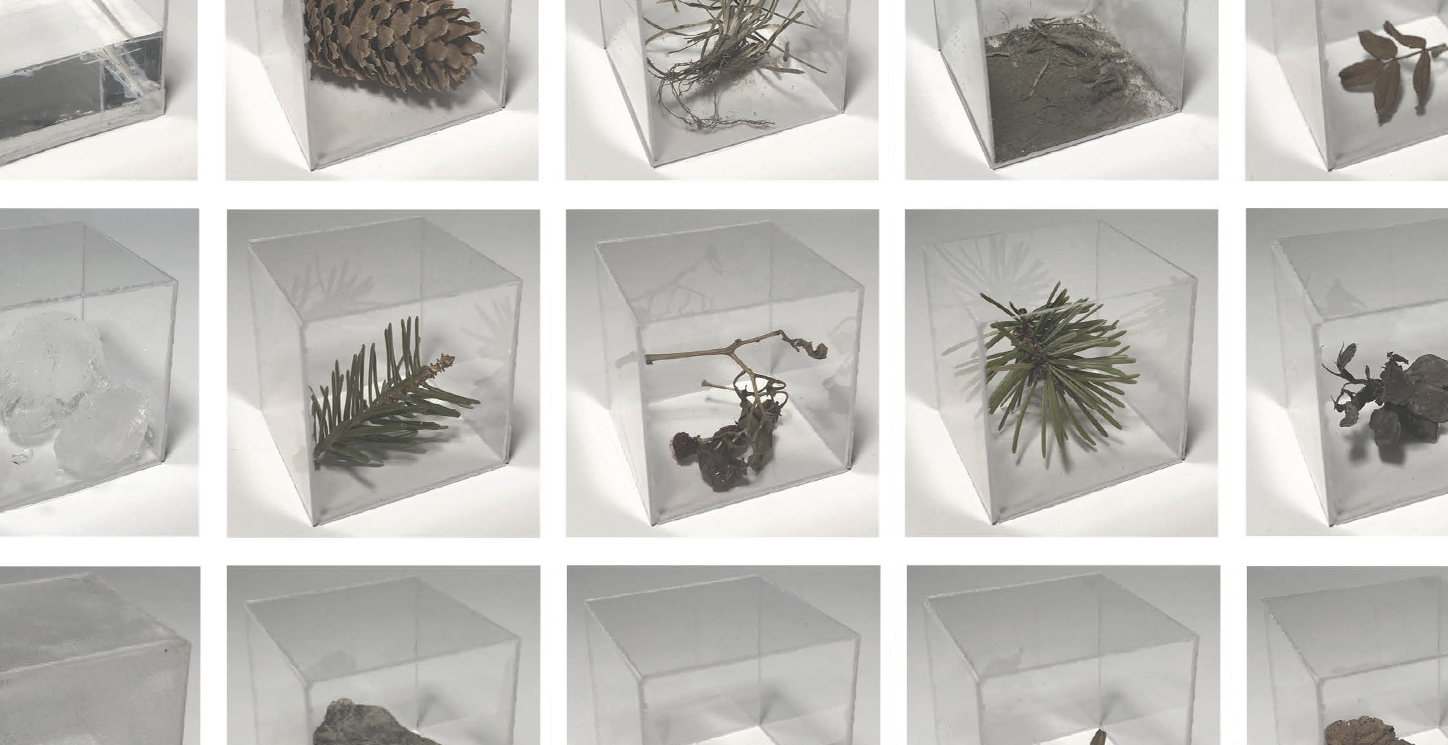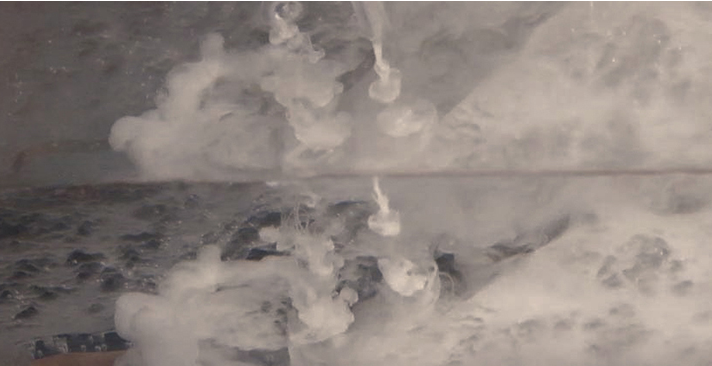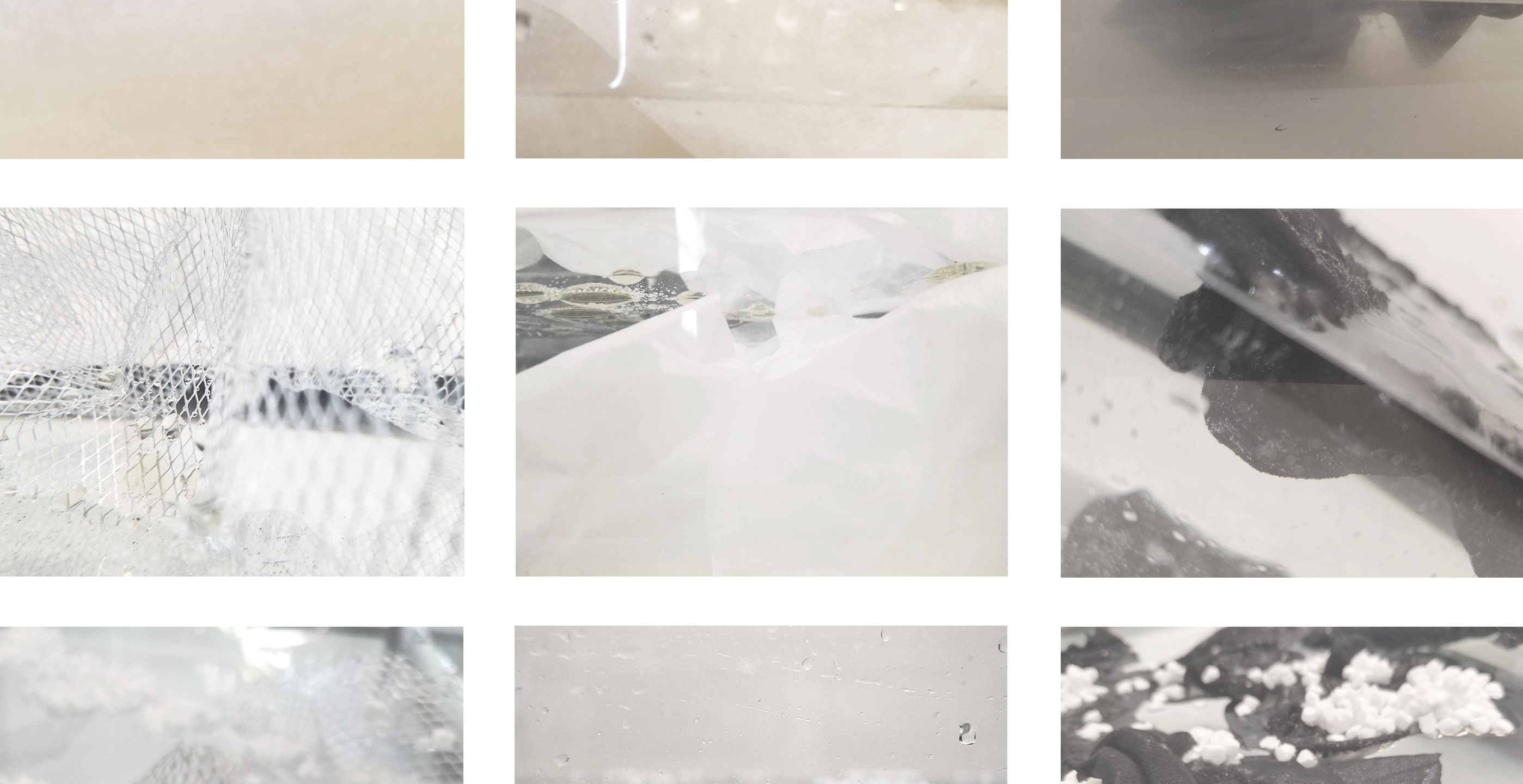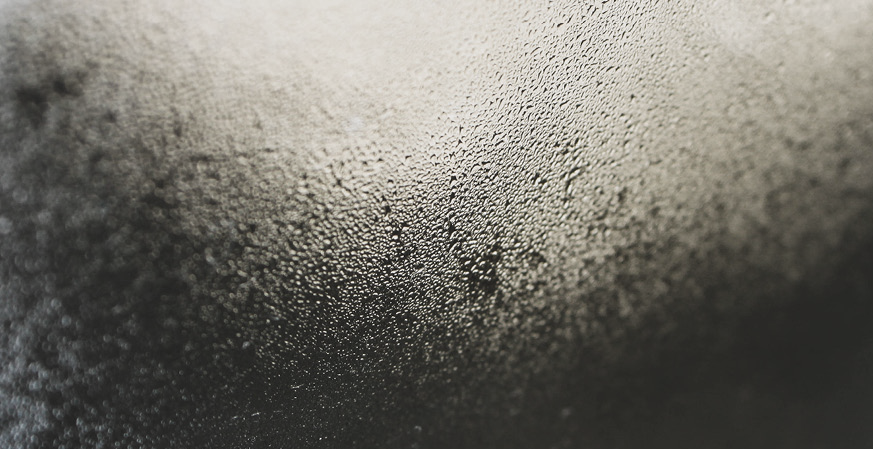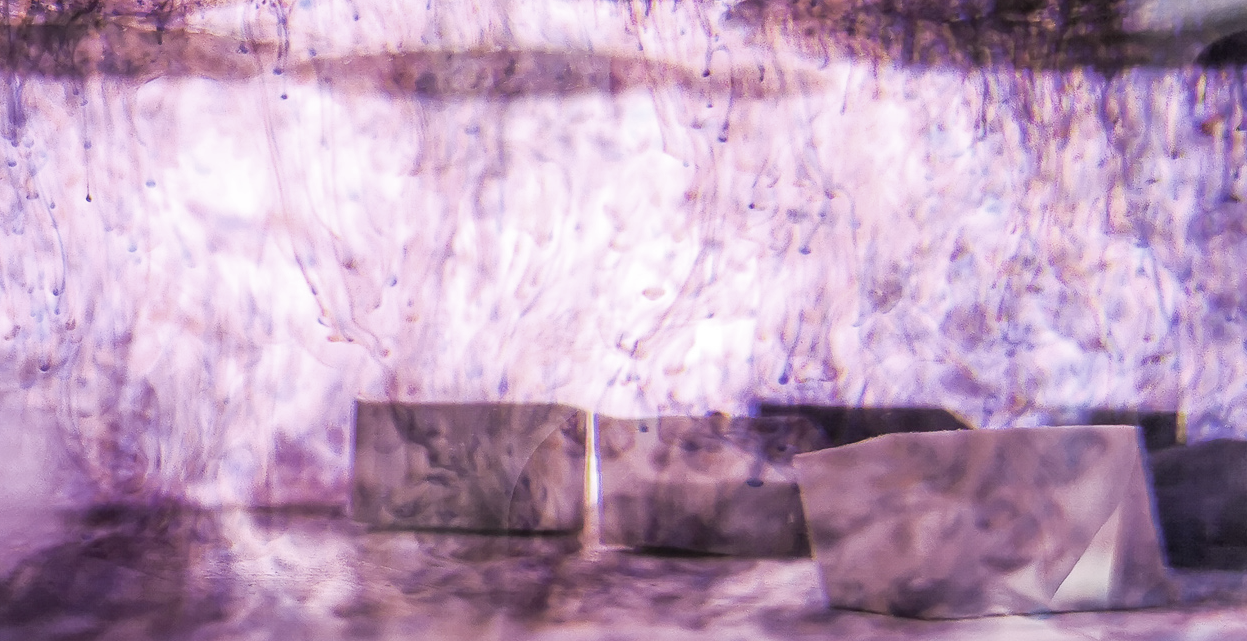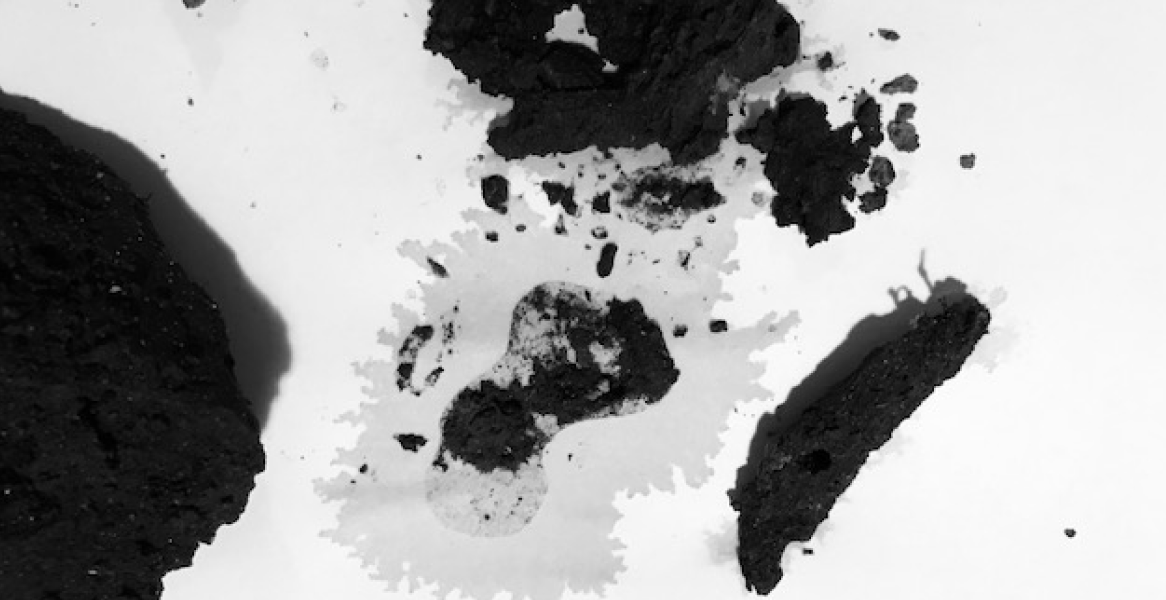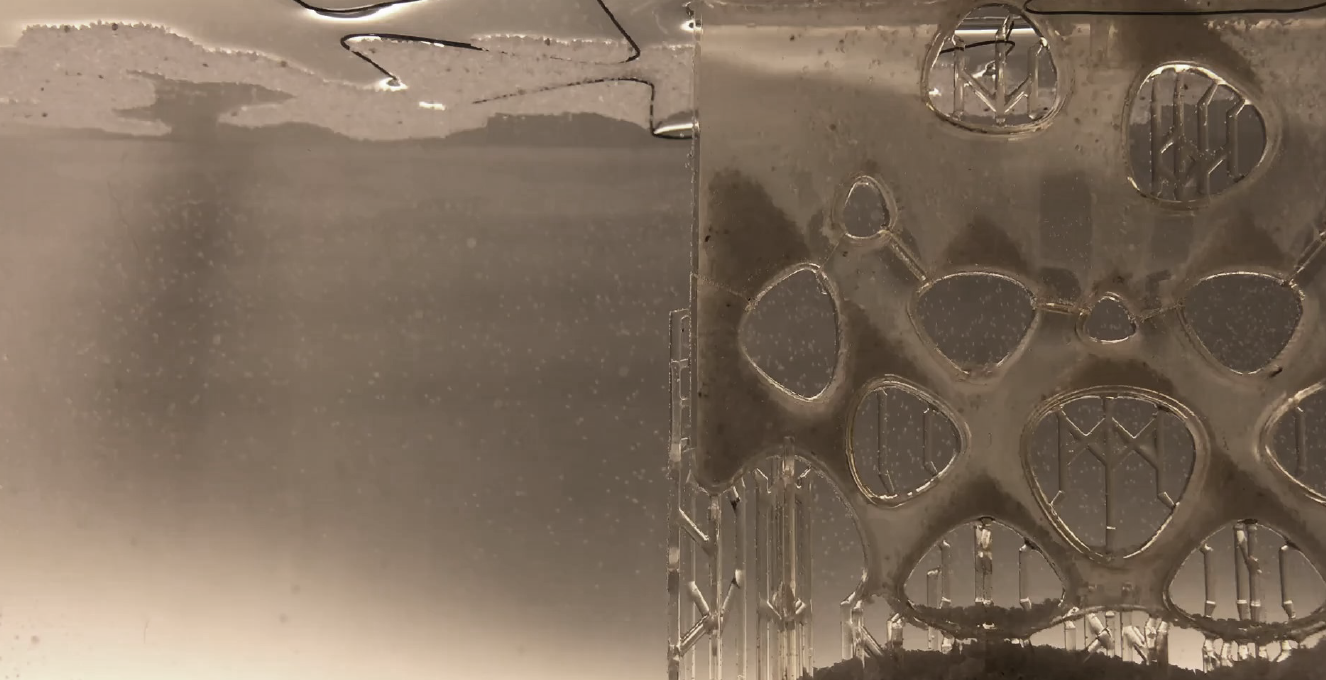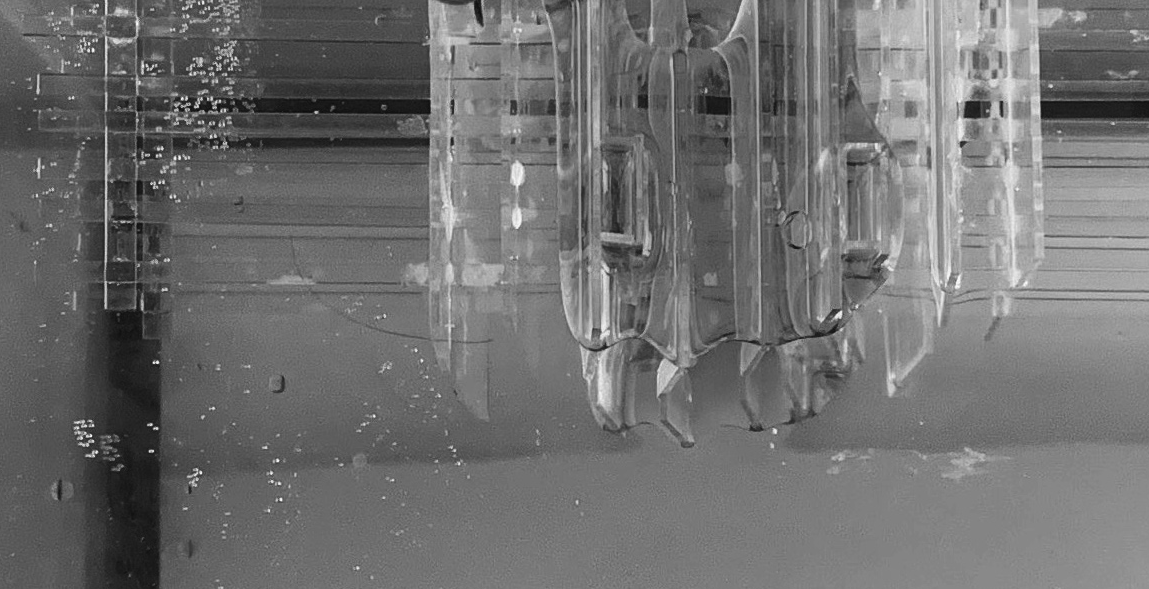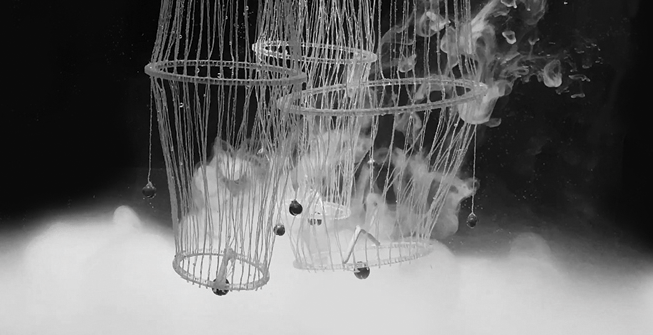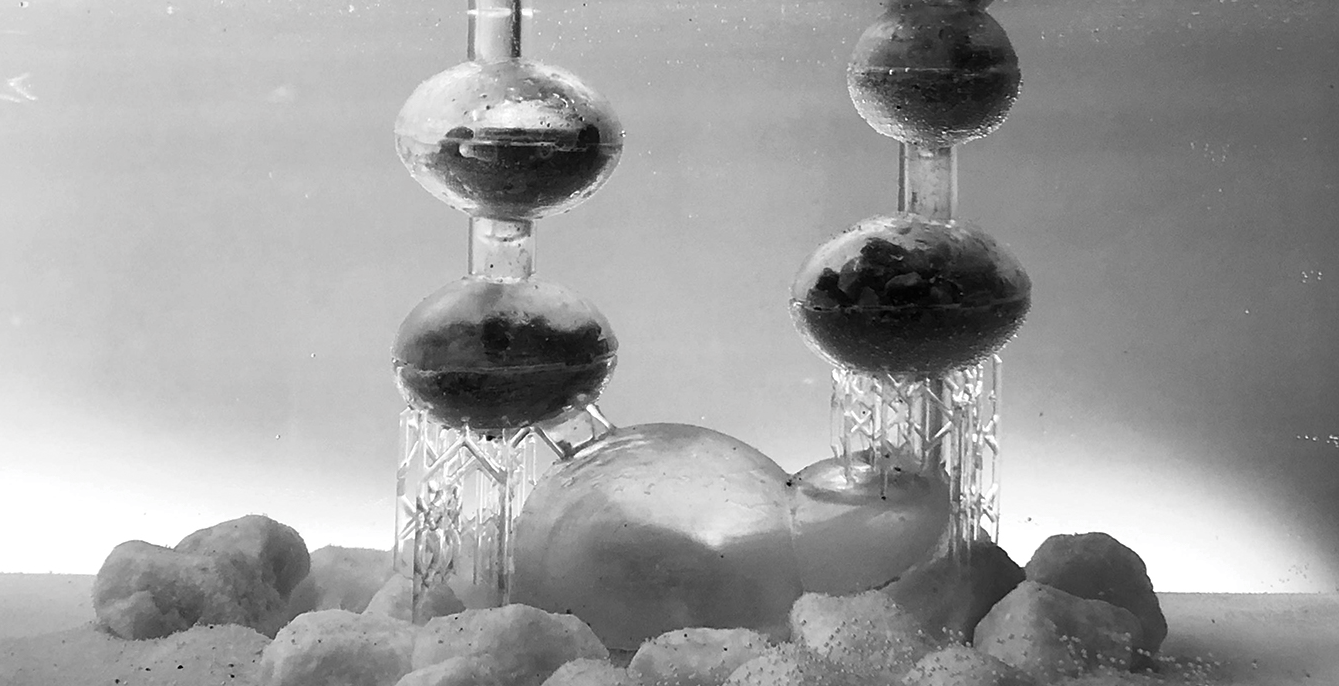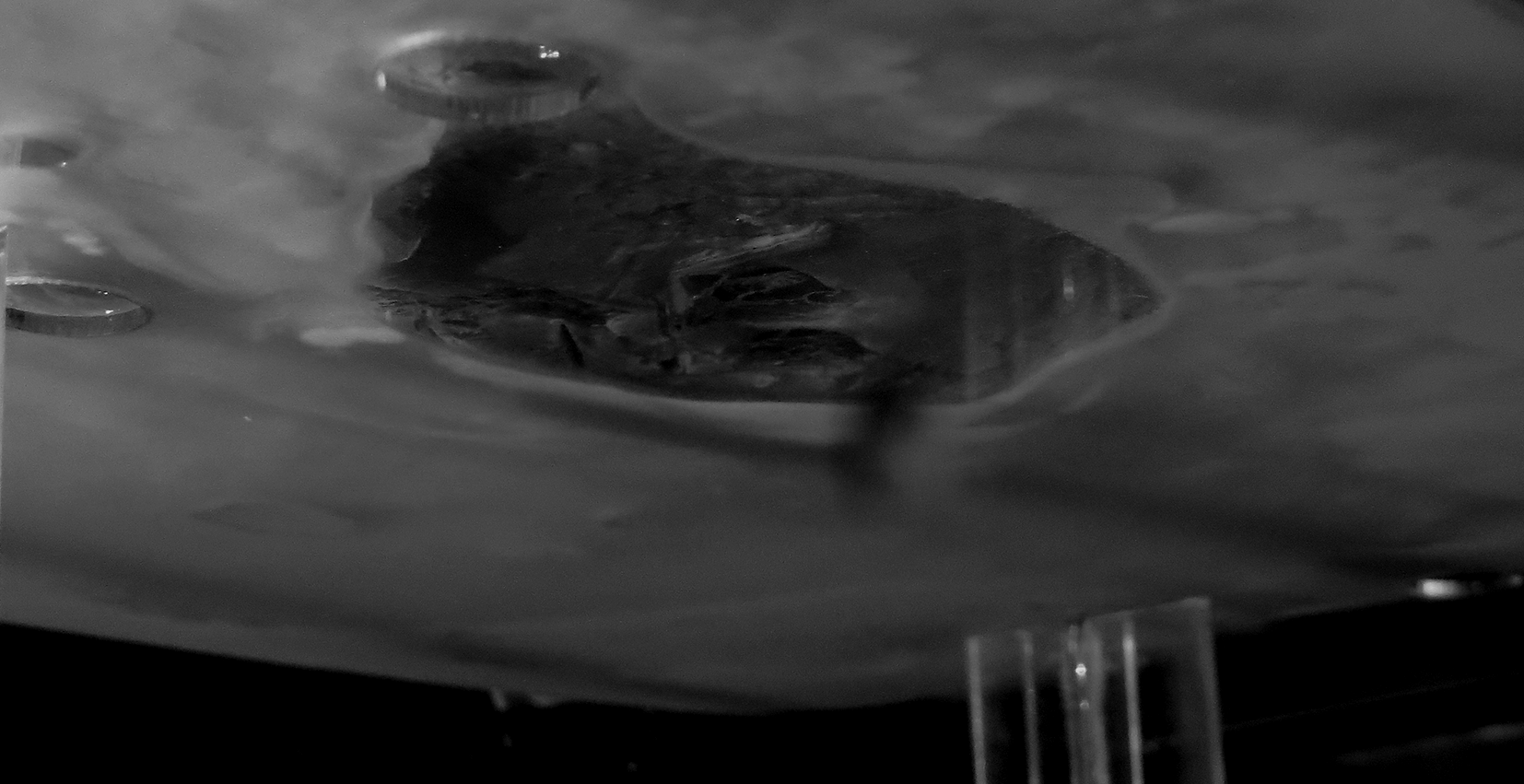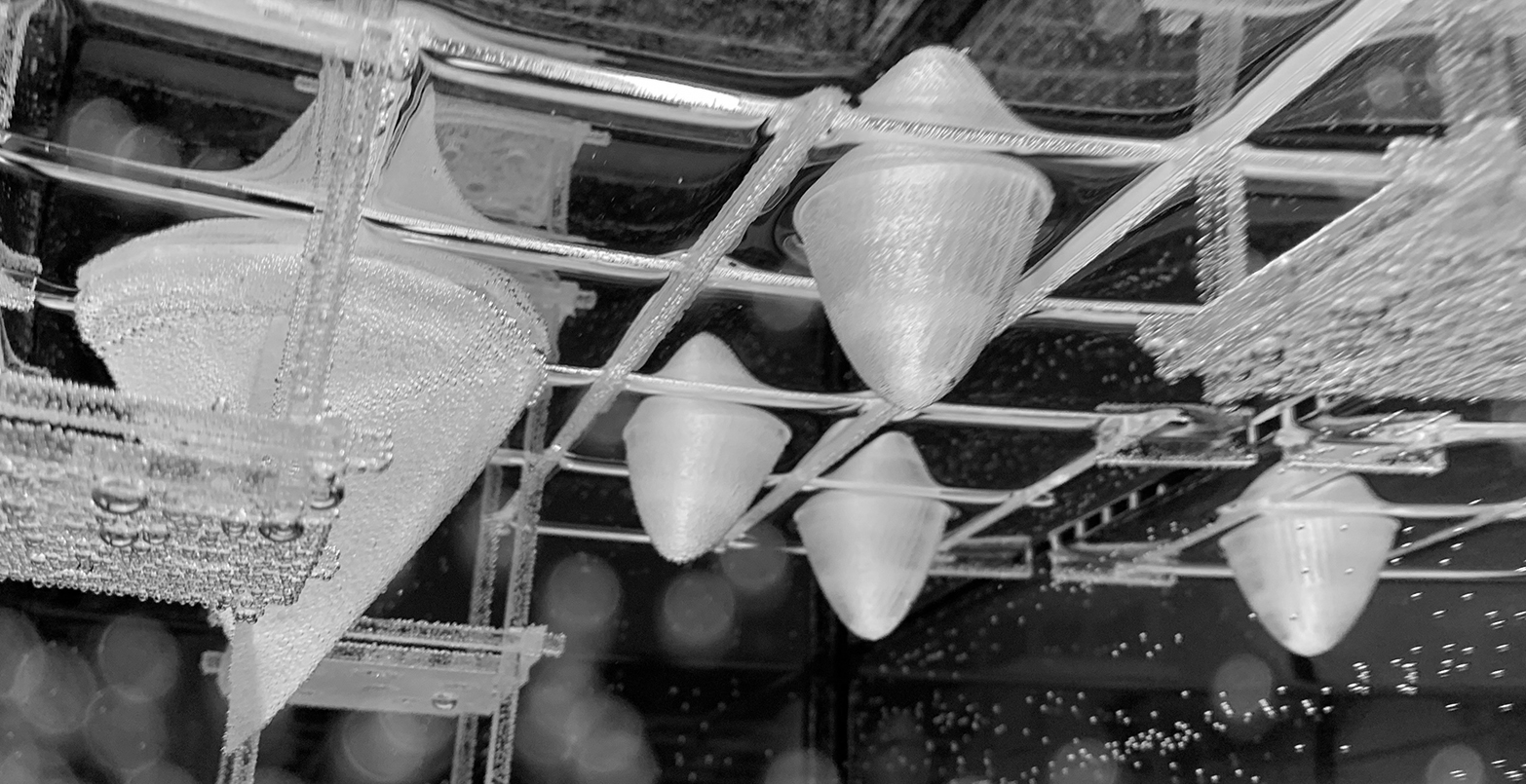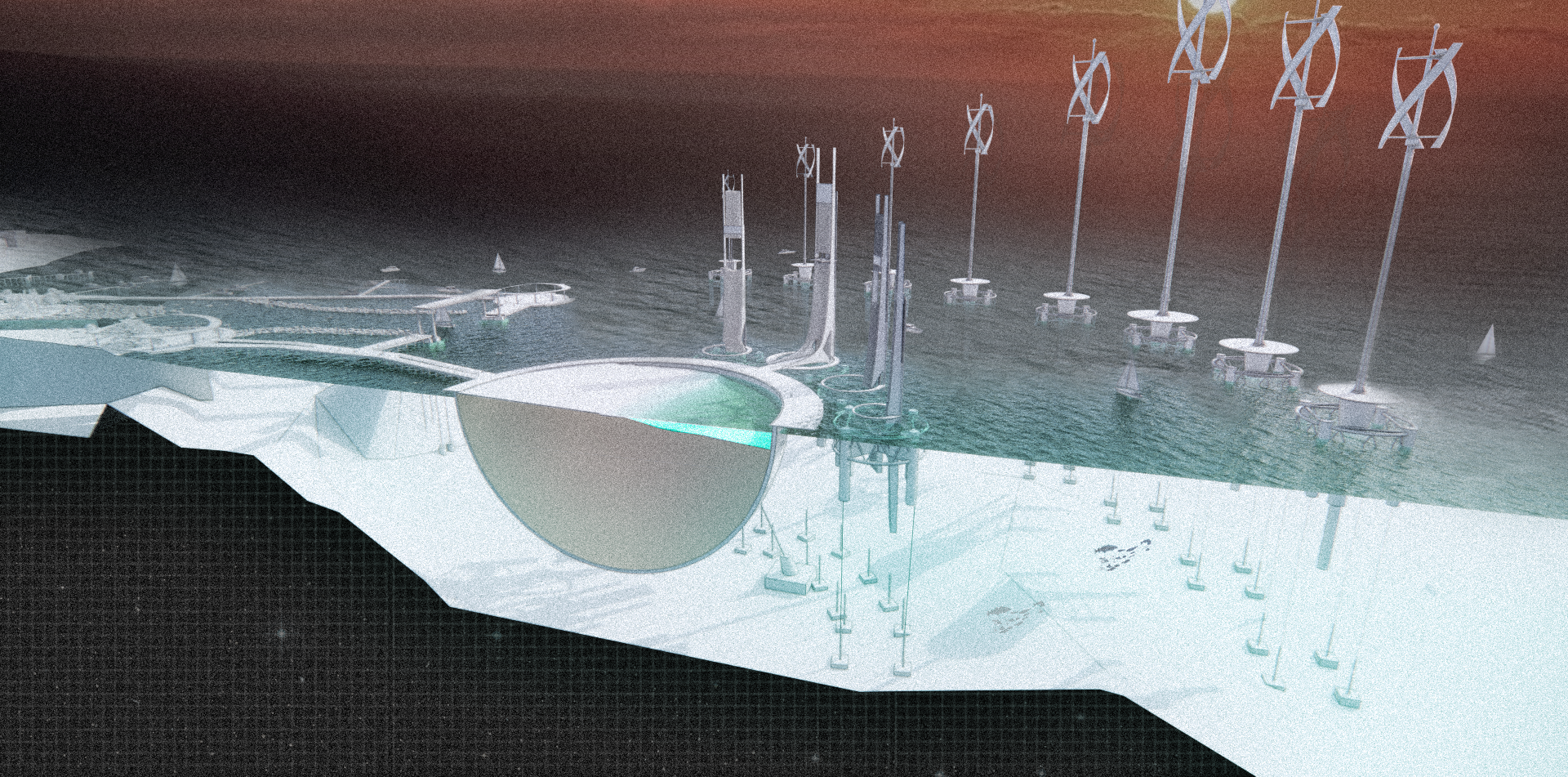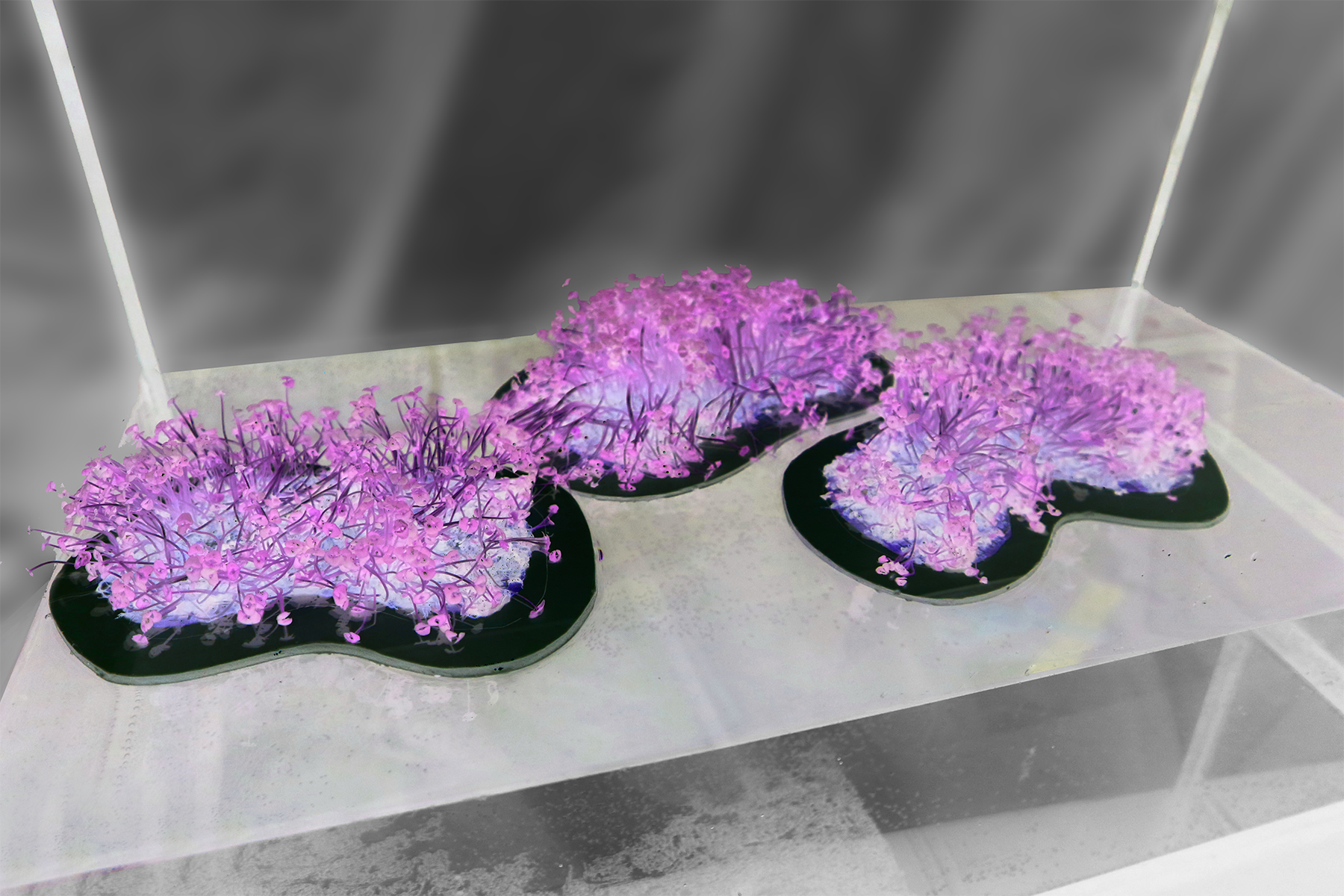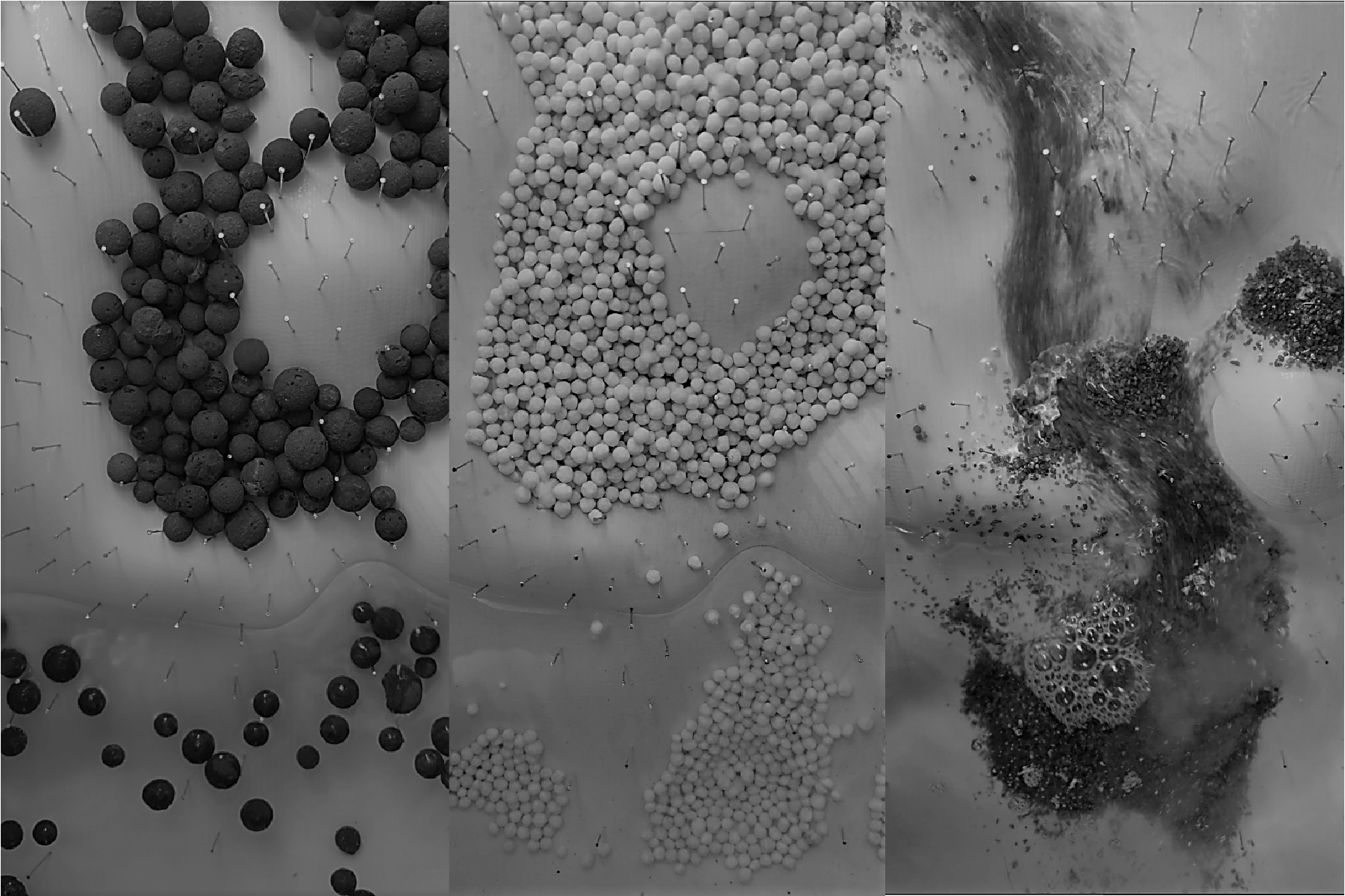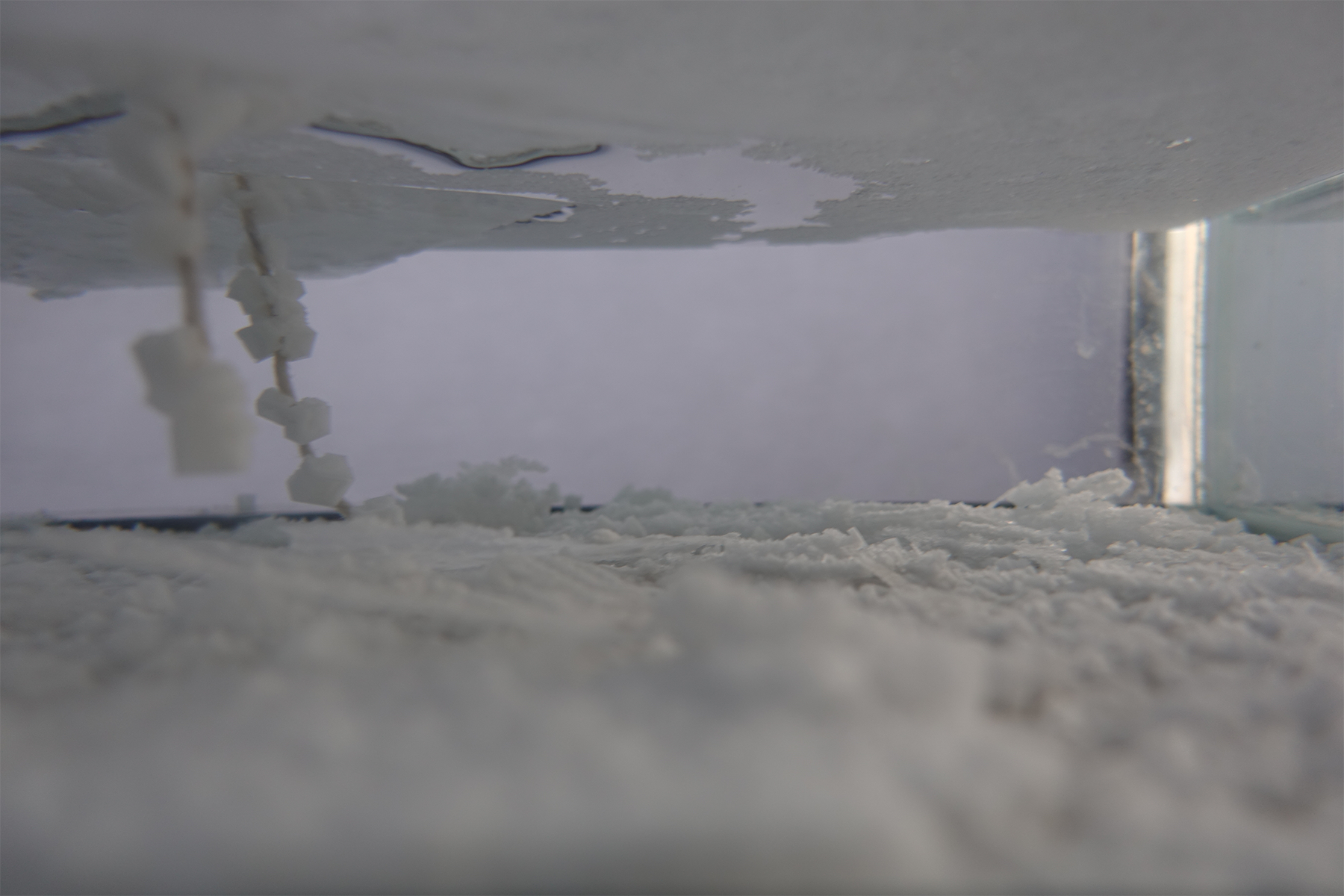Jimmy Ear
Tank Worlds : Hamilton Harbour
[ Island Hop ]
“The square brackets are symbols or operators borrowed from the digital language of coding. The brackets represent the use of an array. In this case the values arrayed are islands, reflecting early studies and the parametric language used for the formation of islands.”
[ Island-Hop ] envisions a new future for Hamilton Harbour in which a series of artificial islands populating the harbour accelerate the ongoing remediation process. Each island aggregation has a distinct typology which in turn fulfills a unique role in the harbour. The proposal consists of multiple phases, starting with the creation of barrier islands for containment of sediment contaminated by hydrocarbons, moving to marshes to expand the local ecologies, and concluding with archipelagos that host new spawning grounds over time. All islands are ‘artificial’ and share the same basic construction. An interlocking 3D printed skeletal structure composed of modules of varying sizes form an artificial reef base. The base is topped with layers of ‘natural’ materials such as small rock, gravel, and soil to support growth of vegetation, which form a role in bioremediating water and soil.
This proposal looks at the wider context beyond the human through the creation of non-human habitats. The potential short-term disruption caused by this intervention is an essential step for the healing process to take place. The rebirth of this neglected landscape represents the reclamation of a broken habitat.
